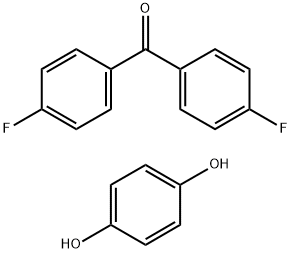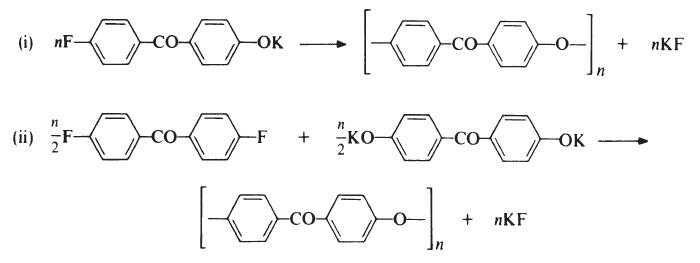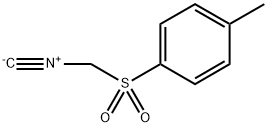PEEK
- CAS NO.:29658-26-2
- Empirical Formula: C19H14F2O3
- Molecular Weight: 328.31
- MDL number: MFCD01868088
- Update Date: 2024-12-18 14:15:32

What is PEEK?
Chemical properties
Polyetheretherketone is a strong rigid material with outstanding heat resistance. It withstands long periods at 250°C with little change in mechanical properties and can be used up to 315°C. This level of heat resistance is the highest of current commercial melt-processable thermoplastics. The polymer also has excellent electrical insulation characteristics. Polyetheretherketone is resistant to all organic solvents although a few can cause environmental stress-cracking. The material is soluble in concentrated sulphuric acid. Polyetheretherketone can be injection moulded and extruded on conventional equipment and can be used to prepare glass-fibre and carbon-fibre composites. Applications include coatings for high performance wiring used in the aeronautics and nuclear fields and advanced structural composites.
The Uses of PEEK
PEEK can be sulfonated and coated on nanofiltration(NF) membranes which can be used in the fabrication of antifouling based NF membranes. Sulfonated PEEK (up to 50-70 degree of sulfonation(DS)) can be used in the formation of proton exchange membranes(PEMs) for fuel cells based applications.
Preparation
Polyaryletherketones may be prepared by methods which are analogous to
those used for polysulphones, namely polyetherification and polyacylation.
Polyetherification occurs when fluorinated aromatic ketones react with
phenates, as illustrated by the following reactions:

General Description
Poly(oxy-1,4-phenyleneoxy-1,4-phenylenecarbonyl-1,4-phenylene)(PEEK) is a semi-crystalline polymer with good thermo-mechanical properties and high chemical resistance which can be used as engineering plastics.
Industrial uses
PEEK can be injection-molded, compression- molded, or extruded into stock shapes, which are typically machined to final-part dimensions. Most pump components can be injection-molded as long as they do not require tight tolerances. The strict tolerances required for bushings and wear rings require parts to be machined from molded tube stock.
Replacing bronze and steel wear rings with carbon-filled or carbon-reinforced PEEK components, allows manufacturers to increase pump efficiency by achieving tighter clearances. PEEK resins also reduce vibrations caused by fluid flow across wear rings and excess rotor runout. The ductility of plastic pump components helps them outperform metal versions when it comes to reducing vibration, as well as resisting impact.
Properties of PEEK
| Melting point: | 322°C |
| Density | 1.3 g/mL at 25 °C(lit.) |
| solubility | all common solvents: insoluble |
| EPA Substance Registry System | Methanone, bis(4-fluorophenyl)-, polymer with 1,4-benzenediol (29658-26-2) |
Safety information for PEEK
Computed Descriptors for PEEK
New Products
Tert-butyl bis(2-chloroethyl)carbamate 4-Methylphenylacetic acid N-Boc-D-alaninol N-BOC-D/L-ALANINOL N-octanoyl benzotriazole 3-Morpholino-1-(4-nitrophenyl)-5,6-dihydropyridin- 2(1H)-one Furan-2,5-Dicarboxylic Acid DIETHYL AMINOMALONATE HYDROCHLORIDE 1,1’-CARBONYLDIIMIDAZOLE R-2-BENZYLOXY PROPIONIC ACID 1,1’-CARBONYLDI (1,2-4 TRIAZOLE) N-METHYL INDAZOLE-3-CARBOXYLIC ACID (2-Hydroxyphenyl)acetonitrile 4-Bromopyrazole 5-BROMO-2CYANO PYRIDINE 5,6-Dimethoxyindanone 5-broMo-2-chloro-N-cyclopentylpyriMidin-4-aMine 2-(Cyanocyclohexyl)acetic acid 4-methoxy-3,5-dinitropyridine 1-(4-(aminomethyl)benzyl)urea hydrochloride 2-aminopropyl benzoate hydrochloride diethyl 2-(2-((tertbutoxycarbonyl)amino) ethyl)malonate tert-butyl 4- (ureidomethyl)benzylcarbamate Ethyl-2-chloro((4-methoxyphenyl)hydrazono)acetateRelated products of tetrahydrofuran








You may like
-
 Polyetheretherketone CASView Details
Polyetheretherketone CASView Details -
 Polyetheretherketone CASView Details
Polyetheretherketone CASView Details -
 Polyetheretherketone CASView Details
Polyetheretherketone CASView Details -
 Polyetheretherketone CASView Details
Polyetheretherketone CASView Details -
 Polyetheretherketone CASView Details
Polyetheretherketone CASView Details -
 Polyetheretherketone CASView Details
Polyetheretherketone CASView Details -
 Polyetheretherketone CASView Details
Polyetheretherketone CASView Details -
 Polyetheretherketone CASView Details
Polyetheretherketone CASView Details